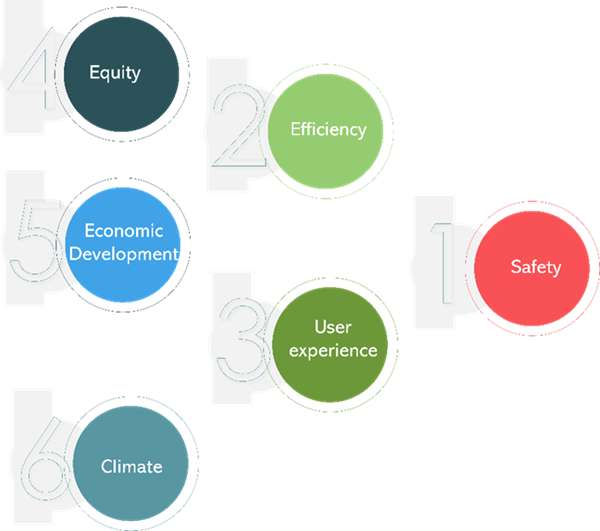We are thrilled to have Bob McQueen, from Bob McQueen & Associates as a guest blogger on our channel. Bob is an internationally recognized expert in smart mobility and Intelligent Transport Systems. He has over 40 years of experience in helping public and private sector clients to get the best results from advanced transport technology, working in the USA, Europe, Middle East and Asia Pacific regions. Clients include leading technology companies such as LG, Samsung, Rockwell Collins and Egis Transportation Systems.
Listen to a narration of the blog on YouTube.
In this third blog of the series, I will explore Vision Zero, aspects of safety, the need for situational awareness, and technology applications that can improve safety.
Safety is always a top priority in roadway operations. Both the intersections, the places where roads meet, and the stretches of road between intersections must be safe and also perceived to be safe. There is an emerging focus in Europe and the USA on what could be referred to as ‘Vision Zero’. This describes a future scenario where road infrastructure is combined with advanced information technologies to deliver the value and benefits of roads with zero fatalities or crashes.
What if I told you that I have found a way to achieve Vision Zero, guaranteed, overnight? I would be able to reduce the crashes on any road to zero. How would I do this? Quite simple, close the road. Radical and impractical as we can’t close the road, so let’s look at why we can’t do that. While safety is always paramount, the objective is not achieved in isolation but within a balanced framework of other objectives that must also be considered. We cannot place an extreme focus on one objective to the exclusion of others. There are many other objectives that smart mobility must address, at a high-level these include efficiency, enhanced user experience, and climate change management. These are the reasons why you just can’t close a road.
Fortunately, we are starting to understand that defining safety as a primary objective not only enables us to improve the safety situation, but also helps us to address the other objectives simultaneously, as illustrated in the figure below.
For example, the application of advanced technology to increase trip time reliability, smooth traffic by avoiding harsh acceleration and deceleration and form vehicles into orderly platoons, can improve safety and reduce congestion. This also addresses enhancing user experience as the driver benefits from a better experience with less stops and delays.
So, let’s discuss further how Vision Zero can be achieved through the application of advanced technologies and how to move towards the goal of Vision Zero in a practical and effective way.
The main ingredients
So, what are the main ingredients of a successful approach to safety? In my opinion, they are, as shown in the figure, starting at the top of the pyramid:
The ability to act appropriately
Based on a high level of situational awareness, the best responses and action plans can be developed and applied. Of course, services and applications come into play again as significant implementation tools.
An appropriate level of situational awareness
From a safety perspective it is important to know what is happening, what will happen in the future, and what to do about it. This should encompass all aspects of safety as described above.
Services and applications that enable you to know and act
Services and applications deliver value to the end user including travelers and fleet operators by providing information on the best choices.
An efficient and effective telecommunications foundation
Situational awareness, services, and applications can only work efficiently if they are underpinned by a firm foundation in telecommunications network infrastructure, as illustrated in the figure. Another important dimension of effective telecommunications approaches lies in system and application security. For the system or solution to do its job over an extended period, it must include cyber and physical security arrangements to protect it from those that pose a threat. It is important that these security arrangements are “industrial grade” using the best available technology from the wider world of Internet and commercial systems. Let us also not forget physical security as there is no point in having world class cyber security if the physical security is not up to par. Easy access to cabinets and equipment would enable bad actors to undermine cyber security arrangements.
It is an exciting time to be involved in the mobility industry. More data is available now than ever before, and new technologies have emerged that allow us to improve safety, while also achieving our other objectives. A well-structured, robust approach should be taken that considers all aspects of safety in an integrated approach making the best use of available technology. Initiatives should be results focused, never losing sight of the intended outcomes. While careful stewardship should be applied to expenditure, the human cost of poor safety along with the cost of property damage, should justify good levels of investment, to enable objectives to be achieved.
Now that you know what can be done if you would like to know more about smarter, greener, and safer roadways? Click here!
Leave a Reply
You must be logged in to post a comment.

